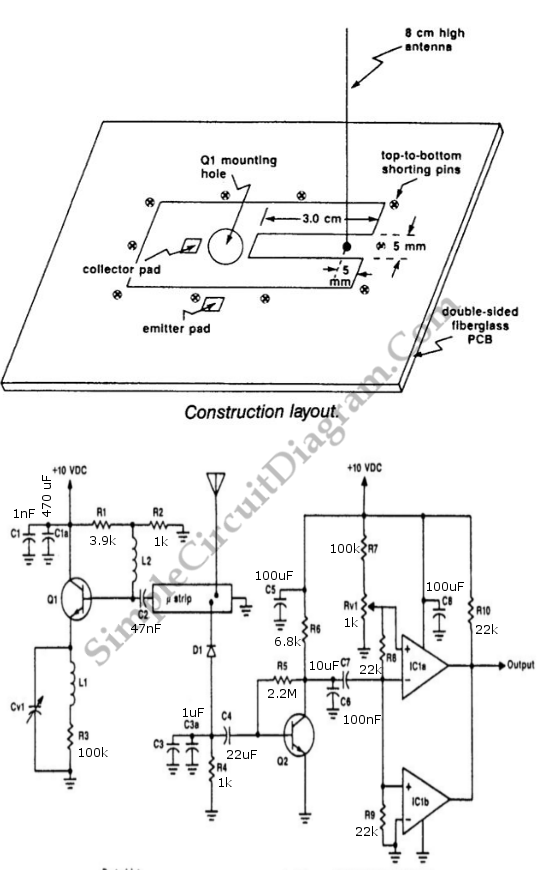UHF Doppler Motion Detector
The UHF motion detector below operates on the Doppler radar principle. A radial signal is created by the oscillator (Q1). Some of this energy is reflected back to the generator by an object in the radiated field. The reflected signal will have a different frequency because of Doppler shift if the object is moving.

Q1 is an oscillator coupled to a small (8 cm) antenna. The reflected signal is also received by this antenna. D1 acts as a mixer and produces a beat note of frequency that is equal to the difference in reflected and radiated signal. The signal is amplified by the Q2. Q2 also couples it to comparator/detector IC1A and IC1B. Then, the output signal can continue on to an alarm, relay, lamp, etc. [Circuit’ schematic diagram source: seekic.com]